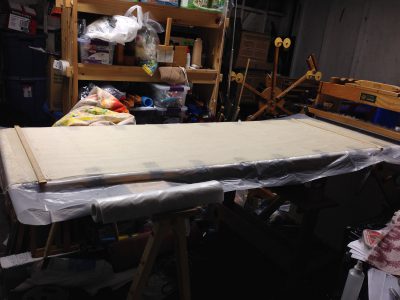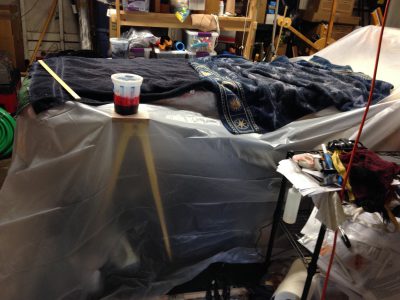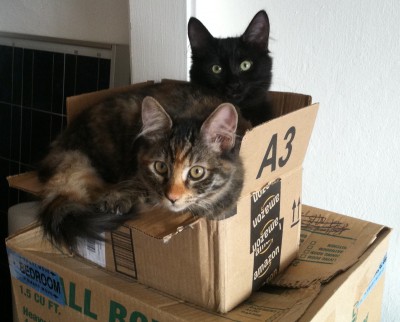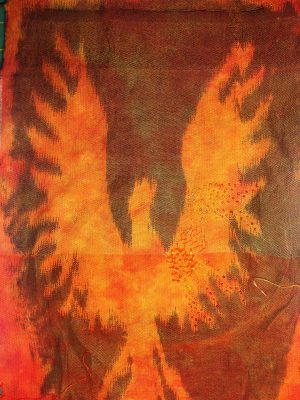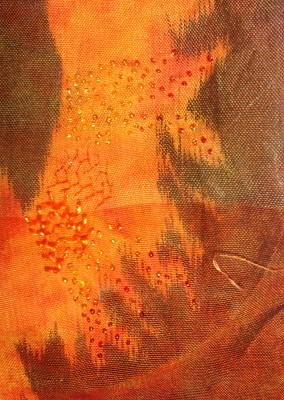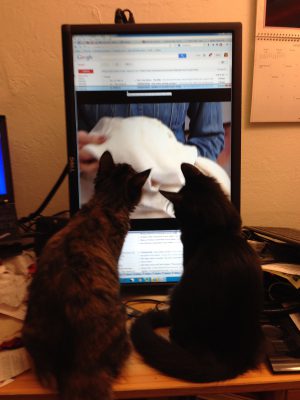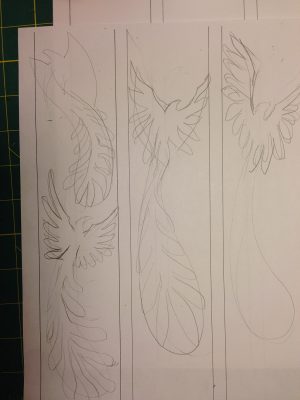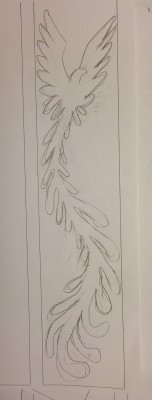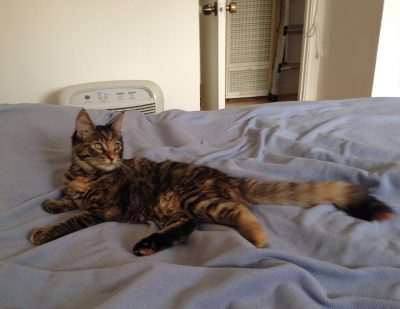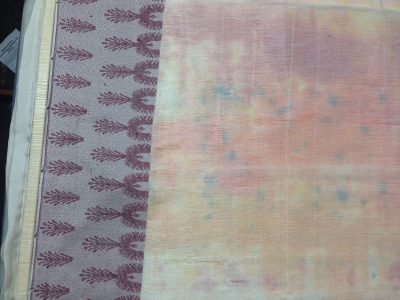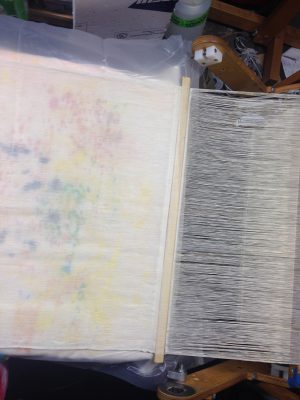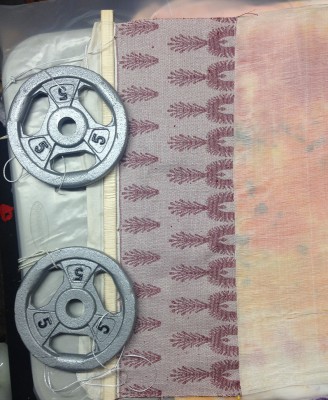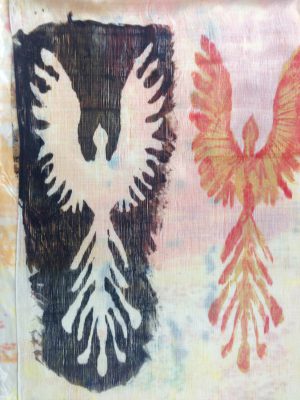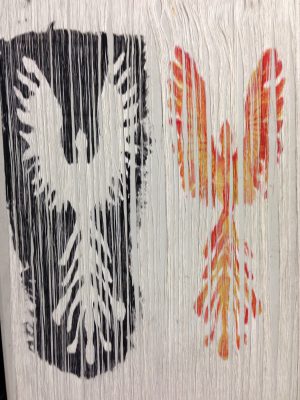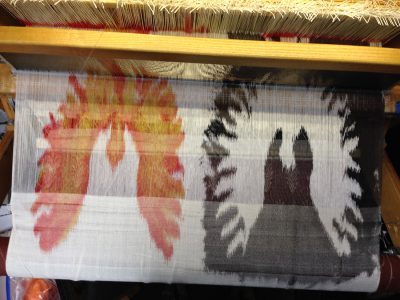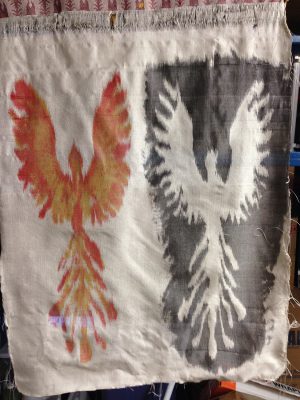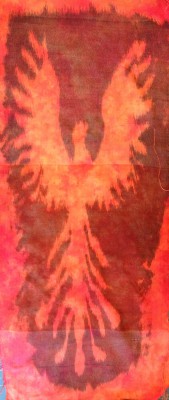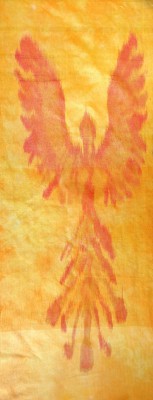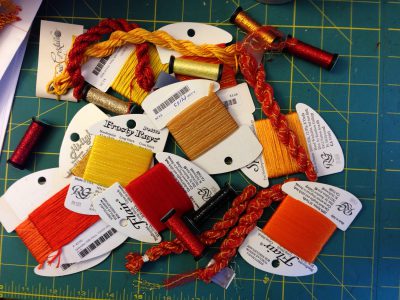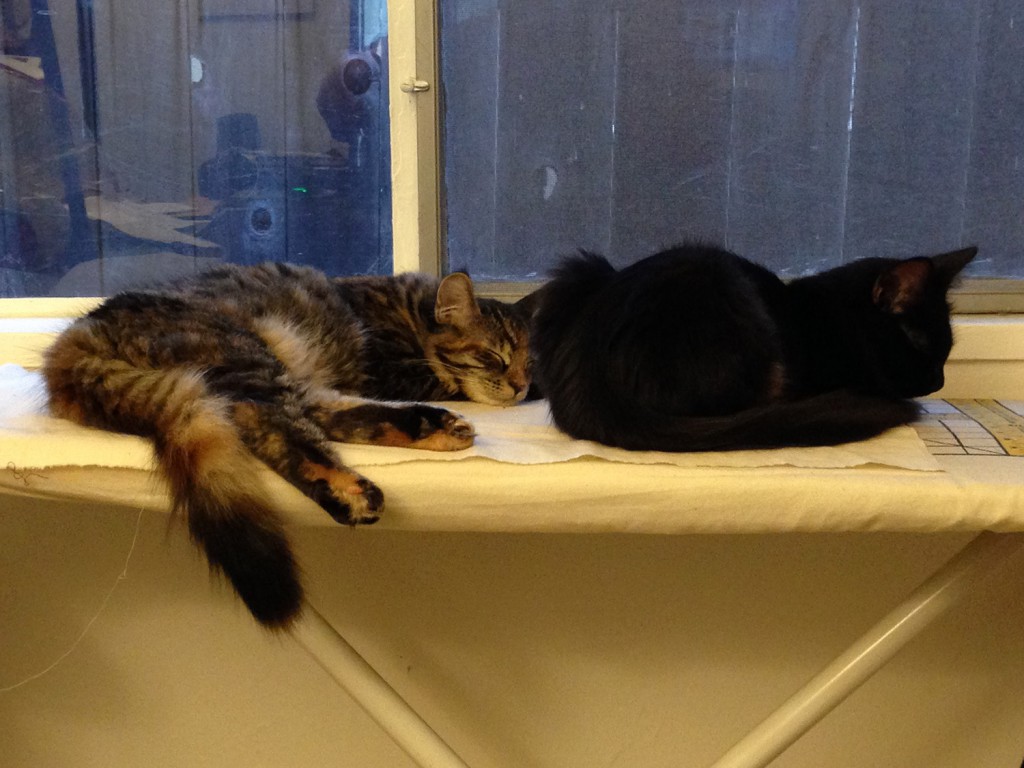I uncovered and rinsed out my warp yesterday morning. Here’s what it looked like before rinsing:
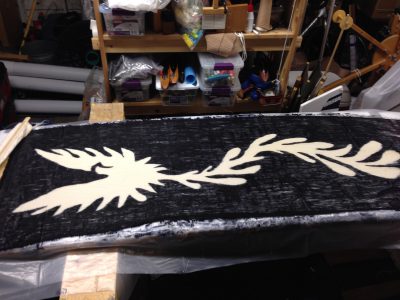
I was worried about backstaining (getting black dye into the white areas while rinsing), so I did the first two rinses in ice water. This removes the soda ash, so the dye can no longer bind to the fiber. The ice is to lower the temperature, preventing the dye from reacting before the soda ash is removed. Then I did two more rinses in hot water to remove the unbonded dye. Here we are, going from the second rinse (ice water) into the third (hot water).
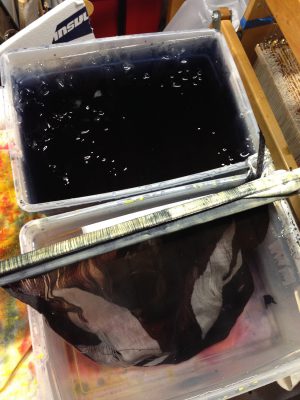
This worked remarkably well, and here’s what the warp looked like post-rinse:
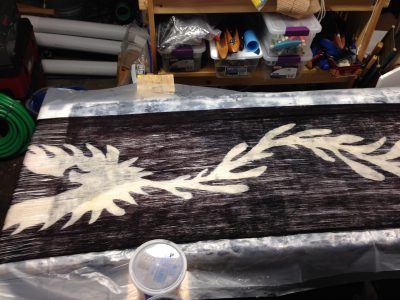
No backstaining at all! (The darker spots are from the stuff underneath the warp, not backstaining on the phoenix.)
I was also pleased with how well the sacrificial weft held the warp together – no clumping or tangling.
As the warp dried, however, I was astonished to discover it was not actually black, but a deep maroon tending towards eggplant:
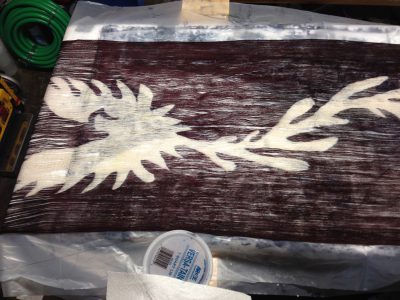
Here’s a closeup of the color, once fully dry.
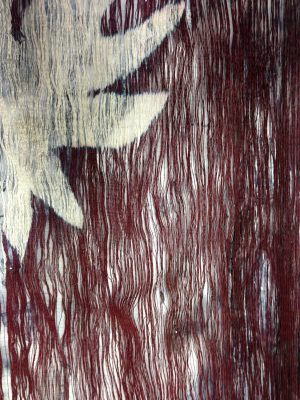
I was racking my brains, trying to figure out the problem – had I not kept it warm enough? Did it need longer to react? Then I remembered that I was using a black dye meant for cotton on silk – and Procion MX mixed colors shift on silk, because of changes in reactivity and dye uptake between silk and cotton.
On sober consideration, however, I decided that the change was not a bad thing. The redder tinge would warm up the piece, making it more fiery, and enhancing the feel of a phoenix rising from death. Of course, we’ll have to see what it looks like in the Real Thing!
So I set it up and got ready to weave:
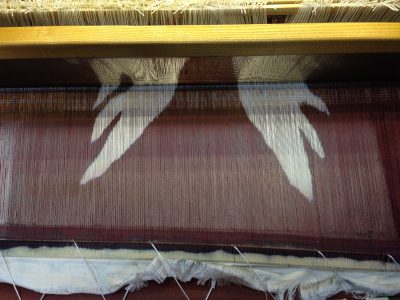
I had quite a few loose threads, and pulling them forward would have distorted the image, so I weighted the ends instead. Here is a look at the back of the loom (pardon the mess on the floor; I never was tidy!):
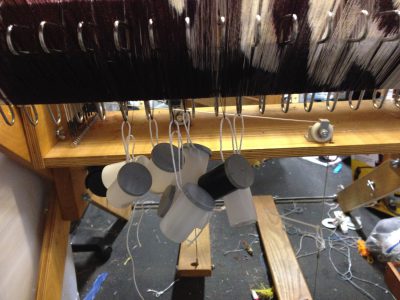
Then I started weaving. Much to my surprise, every fourth thread (in some areas) got pulled forward by about half an inch:
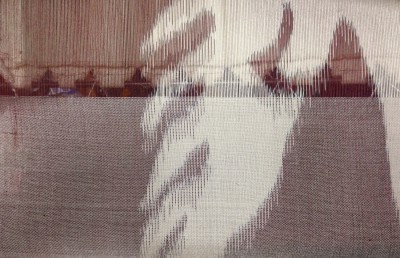
I tried to figure out why. It couldn’t be the threading, because there was no consistency across shafts. While it was more prevalent in some areas, it was fairly uniform across the warp. What would cause a change every four threads?
Then I remembered. When I wound the warp, I had intended it as a sample warp. So, I used three cones of yarn from one supplier and one cone from a different supplier, figuring I could use up the last bits of the yarn from the second supplier. Apparently the tension or the stretchiness of the oddball cone was different from the others, resulting in feathering when woven. (I do run the threads through a tension box as I wind them on, but perhaps the difference was too great to even out via tension box.) I took a closer look at the threads and realized that the oddball threads also took the dye slightly differently – so yes, they were almost certainly a different yarn. Object lesson: not all 60/2 silks are the same!
Still, I like the feathering, so this is not a problem – though I do wish the feathering was more random.
Due to a number of other flaws, this will likely be another sample piece. But that’s not a bad thing; it will give me freedom to embellish (or not) with abandon, testing things out before doing the final piece.
Finally, I leave you with this image of domestic bliss:

They went to the vet on Tuesday for their final vaccinations and a health check. The vet pronounced them eminently healthy, and said we didn’t need to come back for another year. I’m sure that will make the kitties happy.

